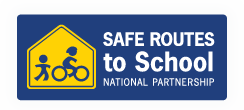March 6, 10 am -12 pm (PST)
Innovative Transportation Stormwater Management: Green Infrastructure in Road Projects
The U.S. Environmental Protection Agency’s Office of Wastewater Management and the Federal Highway Administration’s Office of Project Development and Environmental Review are teaming up to co-sponsor the webcast “Innovative Transportation Stormwater Management: Green Infrastructure in Road Projects.”
Roads can convey a variety of pollutants into our waterways and can increase the volume and velocity of stormwater generated. Green infrastructure techniques are one solution that can be used to reduce and treat stormwater runoff. This webcast will include brief overviews about green infrastructure from FHWA and USEPA and showcase two state transportation organizations committed to innovative initiatives to improve water quality and manage the quality and quantity of stormwater runoff from road surfaces. The speakers will highlight collaborative projects, policy recommendations to strategically incorporate green infrastructure into the roadway funding and approval process, and describe a programmatic approach to the design and construction of stormwater BMPs along with a chloride offset program.
March 14, 10 am- 11:30 am (PST)
Pedestrian Safety and the Highway Safety Improvement Program
This webinar will provide an overview of the Highway Safety Improvement Program (HSIP) and its applications for addressing pedestrian safety.
Karen Scurry (Federal Highway Administration Office of Safety) will provide an overview of the program and discuss the relationships between the different HSIP programs, eligibility requirements, resources for additional information, and examples of pedestrian focused projects that have used HSIP funds.
The webinar will also feature presentations from two states – Arizona and California – to focus on how HSIP is applied on the state and local levels. Providing these presentations will be Kohinoor Kar (Arizona Department of Transportation) and David Cohen (FHWA California Division).
The presenters will also participate in a question and answer session to answer questions from the attendees.
Karen Scurry (Federal Highway Administration Office of Safety) will provide an overview of the program and discuss the relationships between the different HSIP programs, eligibility requirements, resources for additional information, and examples of pedestrian focused projects that have used HSIP funds.
The webinar will also feature presentations from two states – Arizona and California – to focus on how HSIP is applied on the state and local levels. Providing these presentations will be Kohinoor Kar (Arizona Department of Transportation) and David Cohen (FHWA California Division).
The presenters will also participate in a question and answer session to answer questions from the attendees.
March 20, 11 am - 12:30 pm (PST)
Keeping Pedestrians Safe in Urban and Suburban Settings
Pedestrian fatalities have been on the rise over the past couple of years. By attending this free webinar, you will find out more about how we can reverse this unsettling trend and make our urban and suburban communities safer for pedestrians. Walking is the mode of choice for some, and the only choice for many. It is imperative that pedestrian safety becomes a priority for and incorporated into all planning and design processes.
This webinar, Walking Shouldn't Be Hazardous to Your Health, Part 1: Keeping Pedestrians Safe in Urban and Suburban Settings, will provide an overview of tools, campaigns and strategies you can use to work toward a positive impact on pedestrian safety and help reverse pedestrian fatalities and injuries.
Our featured speakers, Noah Budnick and Michael King, are experts in the field of pedestrian safety and the built environment. They will walk you through addressing pedestrian safety in both urban and suburban settings, tackling these issues through campaigns and design.



























